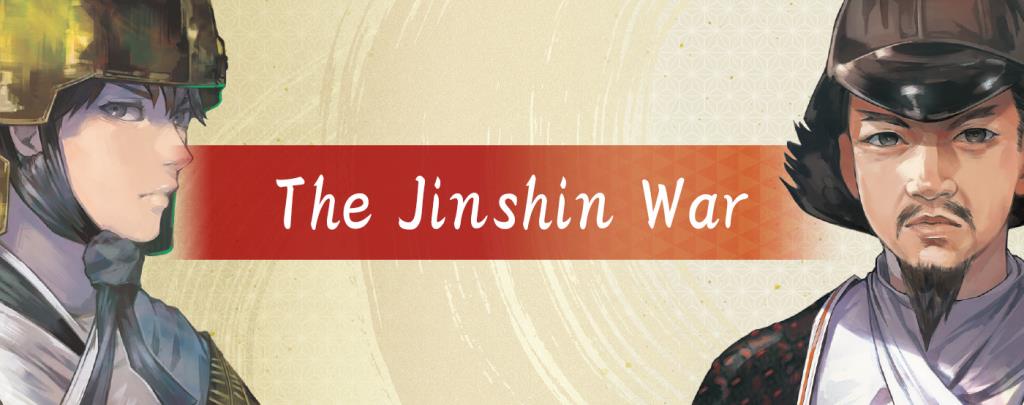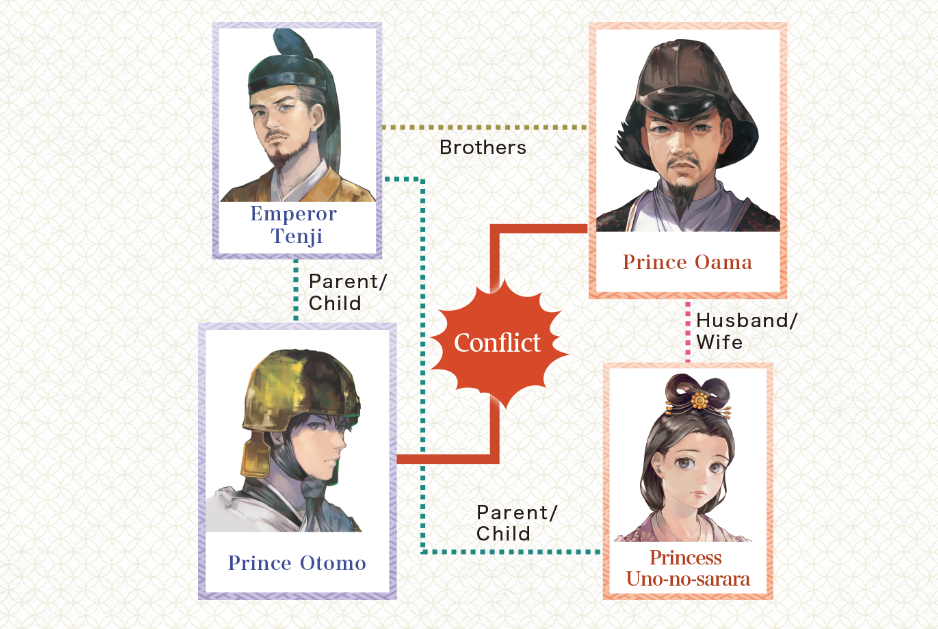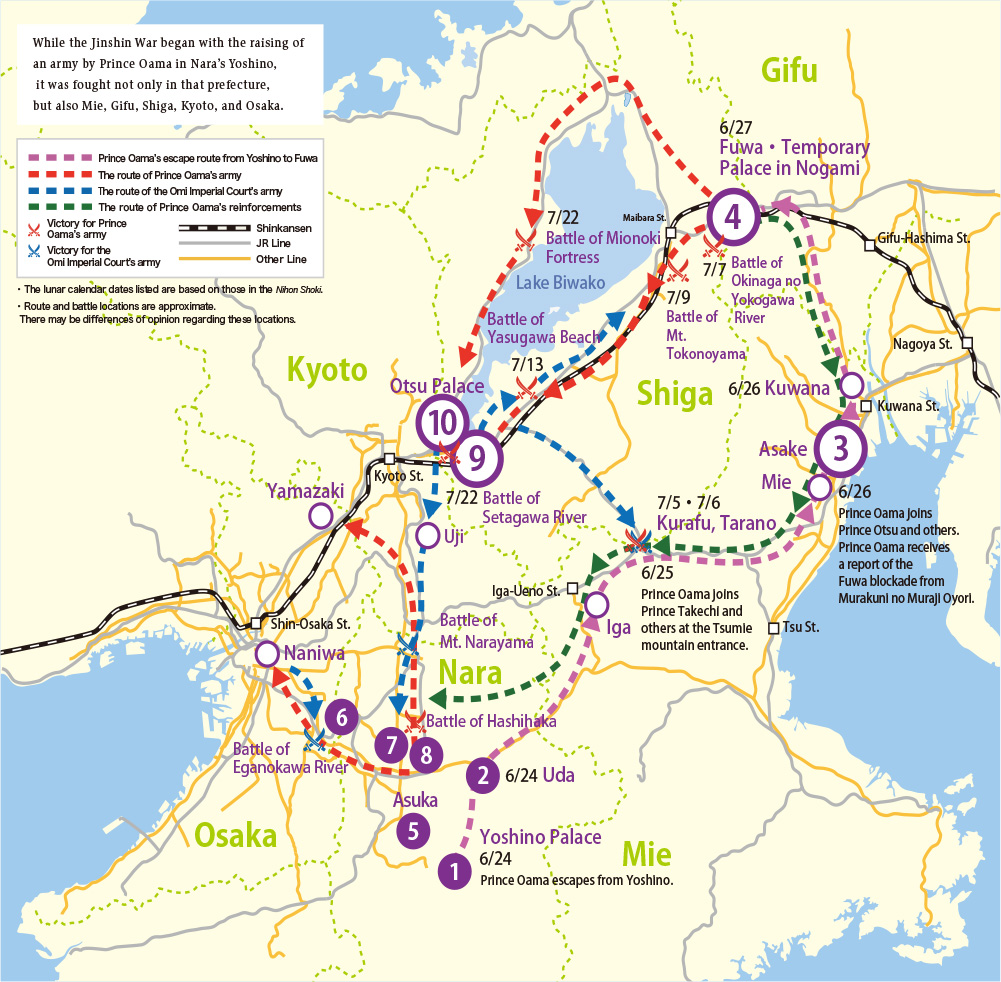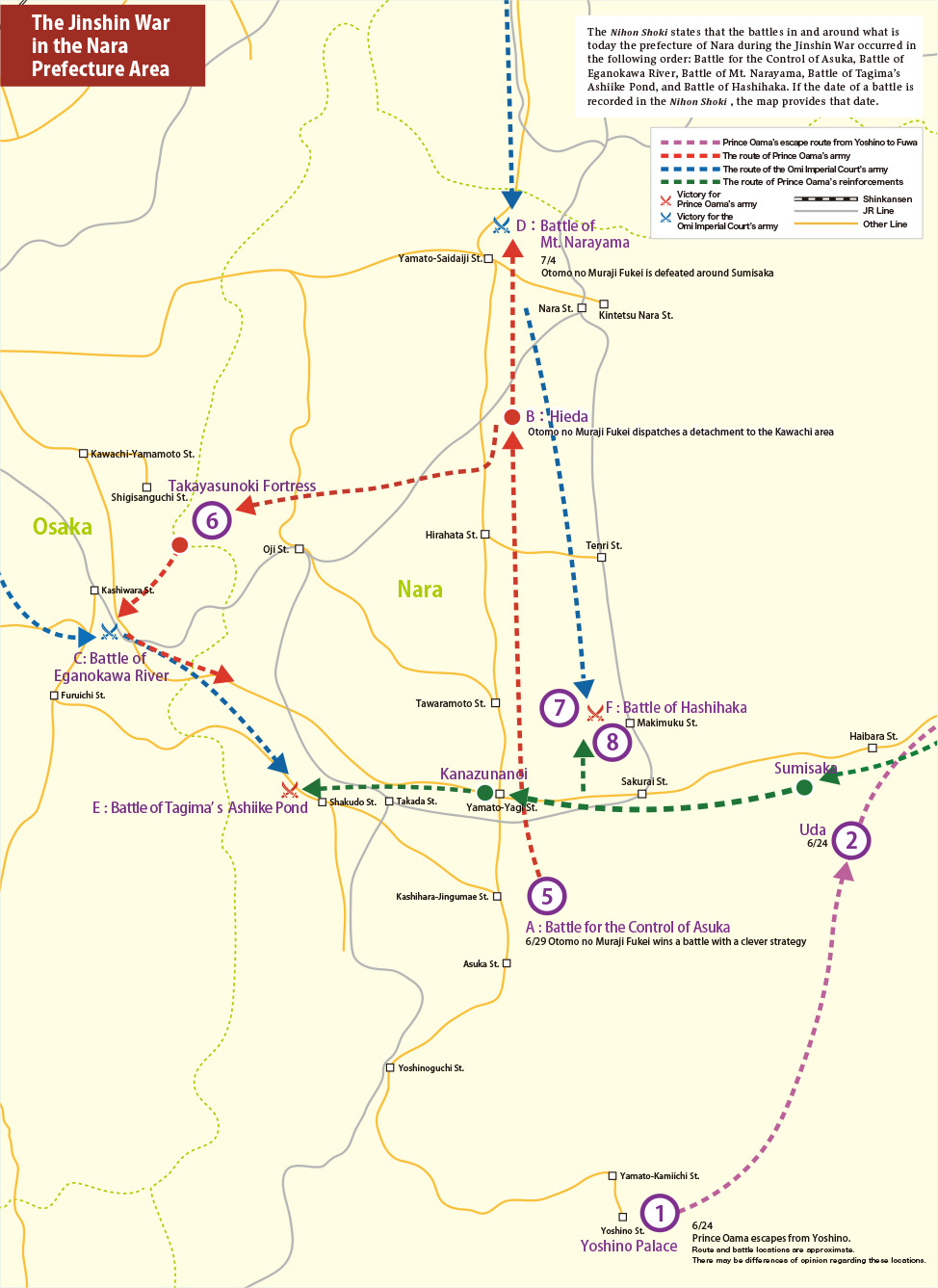

In the first year of Emperor Tenmu’s reign 1350 years ago (672), the greatest war in Japan’s ancient era was fought over imperial succession. It covered a wide area that includes today’s prefectures of Nara, Mie, Gifu, and Shiga. It was customary for the throne to be succeeded by brothers, but Emperor Tenji decided to make his own son, Prince Otomo, rather than his younger brother, Prince Oama (later Emperor Tenmu), his successor. Feeling that he was in danger, Prince Oama joined the Buddhist order and left Otsu Palace in Shiga, the capital at the time, going into hiding in Nara’s Yoshino with his wife, Princess Uno-no-sarara (later Empress Jito). Subsequently, Emperor Tenji died at Otsu Palace and was succeeded by Prince Otomo, but Prince Oama raised an army and began fighting against Prince Otomo’s forces (the forces of the Omi Imperial Court). Prince Oama went from Yoshino to Iga and then towards Ise while gathering troops, and blockaded the Fuwanoseki Barrier (now Sekigahara) in Mino to prevent reinforcements to the Omi Imperial Court from arriving from the east. The Omi Imperial Court’s army, which had not gathered enough troops, fought hard in Yamato, Omi, and elsewhere, but was finally defeated in the Battle of Setagawa River, where Prince Otomo committed suicide. The battle ended in victory for Prince Oama’s army. After the war ended, Prince Oama moved the capital back to Asuka, acceded to the throne as Emperor Tenmu, and began ruling over the country. After the death of Emperor Tenmu, his wife, Princess Uno-no-sarara, succeeded to the throne and became Empress Jito, picking up where he left off.




During the reign of Emperor Tenji, the capital was moved from Asuka to Omi. Even during the Jinshin War,Asuka remained an important area for both sides, and fierce battles between the two armies were fought in the Nara Prefecture area. Here is a brief overview of the major battles in the prefecture. (The capital letters below correspond to those on the map.)
Late in the sixth month of the year, when Prince Oama and his party headed east from Yoshino to raise an army, Otomo no Muraji Fukei, who was in Yamato, began preparations for war, holding that Prince Oama should succeed the throne.
A On the 29th day of the sixth month, Fukei first occupied the Omi Imperial Court’s military camp near Asukadera Temple using a clever strategy. The Nihon Shoki states that Prince Oama, who had left Yoshino and was in command from Fuwa, was pleased upon hearing this and appointed Fukei as shogun. Word of the conquering of Asuka spread throughout the region, and powerful generals in Yamato gathered under Shogun Fukei.
B On the 1st day of the seventh month, Fukei’s army began to move northward to attack Omi. Upon reaching Hieda, Fukei received information that the Omi Imperial Court forces were approaching from Kawachi, and sent part of his army westward to handle that area.
C Subsequently, these Kawachi troops stationed at Takayasunoki Fortress discovered the Omi Imperial Court forces advancing eastward. They fought near Eganokawa River (now Ishikawa River), but were forced to retreat by the other army’s momentum.
D On the 4th day of the seventh month, Fukei’s forces also fought those of the Omi Imperial Court who had moved southward at Mt. Narayama (present-day northern Nara City), but they too were defeated and dispersed. While running away, however, they met allied reinforcements at Sumisaka. They regrouped at Kanazunanoi (perhaps present-day Imai-cho in Kashihara City), and this time marched toward the Omi Imperial Court forces in the west.
E Battling the Omi Imperial Court army at Ashiike Pond in Tagima, they emerge victorious due in part to the heroic efforts of Takekihito-kume.
After returning to the main camp and joining up with Prince Oama’s main military reinforcements that had arrived from the Ise area, Fukei places his forces on the main roads running north-south through the Nara Basin: Kamitsu Michi, Nakatsu Michi, and Shimotsu Michi. Fukei himself was positioned on Nakatsu Michi. The Omi Imperial Court forces suddenly raid the Nakatsu Michi military camp of Fukei. Caught by surprise, Fukei’s army was in disarray, but the soldiers’ determined counterattack managed to hold off the Omi Imperial Court forces.
F On the other hand, about 2 km to the east, the forces of Prince Oama and the Omi Imperial Court clashed near Kamitsu Michi’s Hashihaka Mausoleum. Here, Prince Oama’s forces destroyed those of the Omi Imperial Court, and, taking advantage of their victory, they went to Nakatsu Michi and rescued Fukei and his soldiers. The Omi Imperial Court’s army was unable to support their soldiers amidst this pincer attack, and was defeated. After this, the Omi Imperial Court forces did not attack Yamato anymore.
Then, on the 22nd day of the seventh month in Omi, Prince Oama’s forces won a decisive battle at the Setagawa River, marking the beginning of the end of the Jinshin War.
|